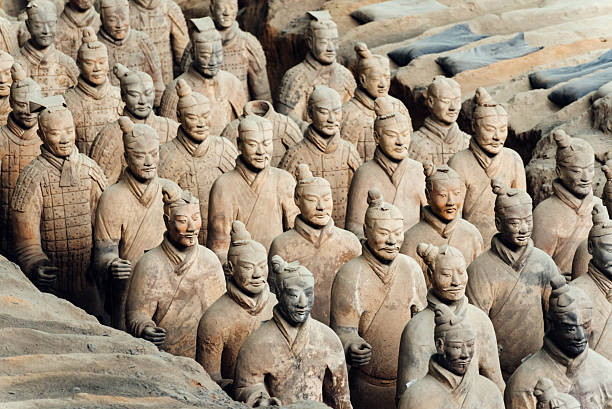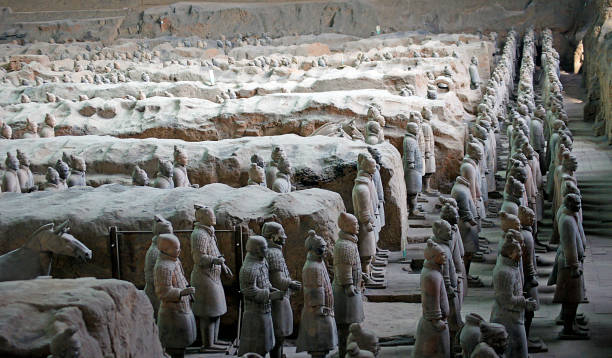Terracotta Army
Thousands of life-size warriors and horses make up the stunning Terracotta Warriors, commonly referred to as the Terracotta Army. 600 subterranean pits from the third century BC are found at Xi'an, China, close to the mausoleum of Qin Shi Huangdi. When residents dug for a well point in the 1970s, they unintentionally found them. Three of these pits are accessible to the public and housed inside the Terracotta Army Museum, however many are still not fully excavated. The remarkable thing about these clay soldiers, apart from their overwhelming quantity, is that each and every face is distinct. They required a combined 40 years of labor and were hand-carved with unique characteristics.
The statues were found in 1974 by local farmers in Lintong County, west of Xi'an, Shaanxi, China. They date to around the late third century BCE. The generals are the tallest of the figures, whose heights vary depending on their functions. The figurines feature horses, chariots, and soldiers. More than 8,000 soldiers, 130 chariots pulling 520 horses, and 150 cavalry horses, according to estimates from 2007, were buried in the three pits that housed the Terracotta Army, the most of which were located close to Qin Shi Huang's tomb. Different terracotta non-military characters, including as bureaucrats, acrobats, strongmen, and musicians, were discovered in other pits.
Location: Lintong District, Xi'an, Shaanxi, China

















